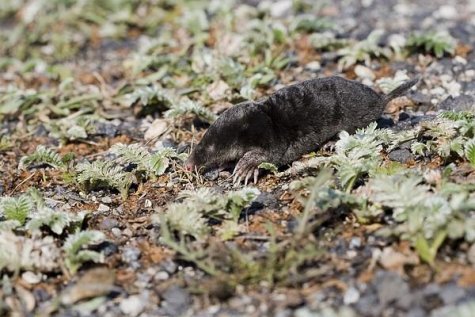Mole’s autumn
Photo: Arne Ader
Translation: Liis
Mole
Mole; European mole Harilik mutt or euroopa mutt Talpa europaea
In autumn mole hills catch the eye and offend gardeners as well as cattle breeders. Moles don’t live in deep forests, likewise they avoid sandy or waterlogged areas. But gardens, parks, grasslands and forest verges suffer.
It is amazing that the digger, on average weighing less than 100 grams, manages to push a pile of soil in the order of one kilo to the surface. The mole’s cylindrical body with a trunk length of up to 15 centimetres plus a couple of centimetres of tail is dressed in a fine and valuable winter fur.
Without strong legs and claws no-one can struggle in the soil, but the mole is rather helpless when moving on the ground. Its eyes are tiny, hidden in the fur, and the eyesight of the subsoil inhabitant is nothing to brag about. External ears are lacking, so hearing is poor. The nose and upper lip have grown together – like a snout but well developed for probing and smelling. This seems to be sufficient for orientation in mole life.
The little animal must consume food corresponding to three-quarters of its body weight. Earthworks are the main food (incidentally the mole collects them in reserve, immobilizing the earthworms with a bite and placing them in store in some nook of a tunnel), in addition all sorts of insects and their larvae. In case of famine cadavers are utiized – if it finds them. Moles don’t go into hibernation, moving below the freezing limit of soil.
Moles with their solitary way of life are aggressive animals, towards their cospecifics as well as intruders, except in the springtime mating period in April. Males are just a little bit larger. The life rhythm in the sark underground realm seems to be – four hours of work ,then four hours of rest and that without any Saturdays, Sundays.
Mole and water vole soil hills can be difficult to tell apart from each other. But check where the opening is – for mole piles in the middle, in a vole pile at the side. The tunnel system of one individual can be up to a couple of hundred meters long. If one mole soil hill is larger than the others a good guess is that that below it is the “livingroom” of the mole.









